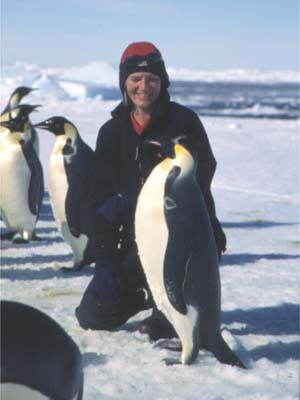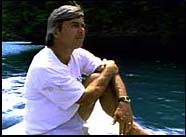I was very pleased to receive the compliments of Mr. Yves Le Masson for my database oxygen rebreathers and website. He added a treasure, a powerpoint about the LAMA rebreathers. I am very pleased to show the Bubble Helmet the LBS and and the SCANUBA.
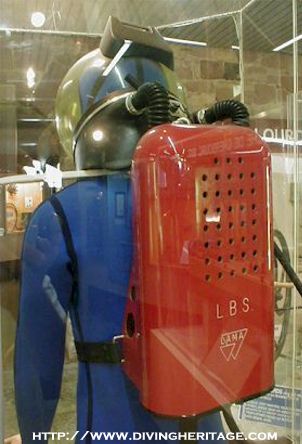
The Lama series helmets and rebreathers were made by a French company called LAMA (Laboratoire de Mecanique Applique). The director of this company was Yves le Masson. They developed the “Bubble Helmet” used in the 80’s BBC series “Sea Trek”. Before this period the Lama company developed several rebreathers. One of them is shown here. (thanks to diving heritage). The LBS rebreather was originally made for offshore purposes. LBS = Lockout Breathing System. Also they made a rebreather called SCANUBA = Semi Closed Automatic Nitrox Underwater Breathing Apparatus. Unfortunately I do not have a picture available.
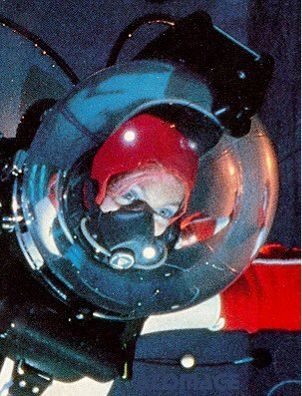
Bubble Helmet:
The tough polycarbonate bubble allows a complete panoramic view without the dimensional distortion inherent in flat view ports. The conventional flat face plates used on virtually all helmets reduces the field of vision (‘telephoto effect’) and causes a 30% magnification in the apparent size of objects viewed. The sense that the image is magnified disappears after a few dives with a flat-port helmet, since the brain quickly learns to interpret the received image, in spite of the actual distortion.
(text from nuytco.com)
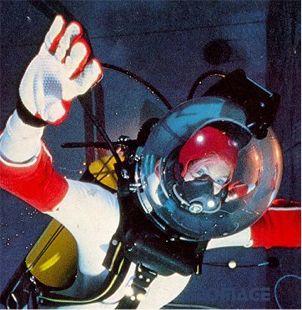
The Lama helmets are still available and sold by the Nuytco research Ltd. company.
We normally look at the underwater world through flat surfaces such as the calm surface of a lake, river, or ocean – the window of an aquarium or the flat viewing port of a swimming pool. (You may have noted how much bigger and deeper a swimming pool or aquarium appears when empty – it is simply undistorted by a flat viewing surface.)
Diving with the Lama-Newt allows the wearer to experience the underwater scene in its real dimensions. If you are an experienced diver and have already learned to interpret the field of view through a scuba mask or flat-port diving helmet, your brain will automatically supply the required ‘flat-port correction’ and everything viewed through the Lama-Newt will appear to be ‘too small’ or ‘too far away’ – relax, this is just an artificially induced 30% reduction…and will soon disappear when your brain ‘unlearns’ the correction. (First-time divers adjust very quickly because they have much less to ‘unlearn’.) Be patient, it will take a few dives for the new interpretation to be assimilated and the view through the Lama-Newt will be perfectly normal – and you will see the under water world as it actually is…free of dimensional distortion.
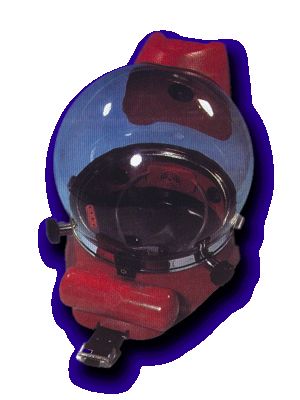
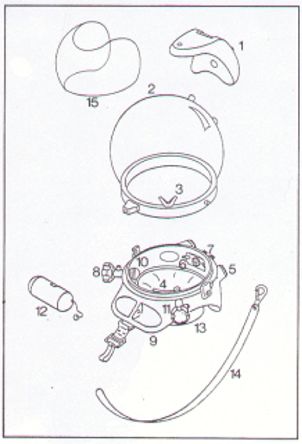
- Removable Bubble weight
- Transparent polycarbonate Bubble
- Equilibrium piece
- Rescue mouth piece
- Exhaust valve
- Speaker
- Communication connector
- Free-flow control device
- Hard polyurethane base
- Jet deflector
- Rescue free-flow control device
- Releasable base weight
- Neoprene neck-seal
- Strap
- Bubble protector

The Bubble helmet used by Martha Holmes and Mike Degruy in there adventure films Sea Trek (BBC)
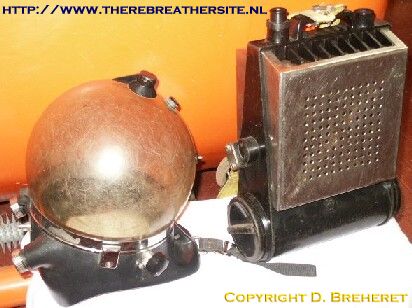
The pictures above: Thanks to: Dominique Breheret Dominique Breheret Nuytco Research Ltd. Diving heritage
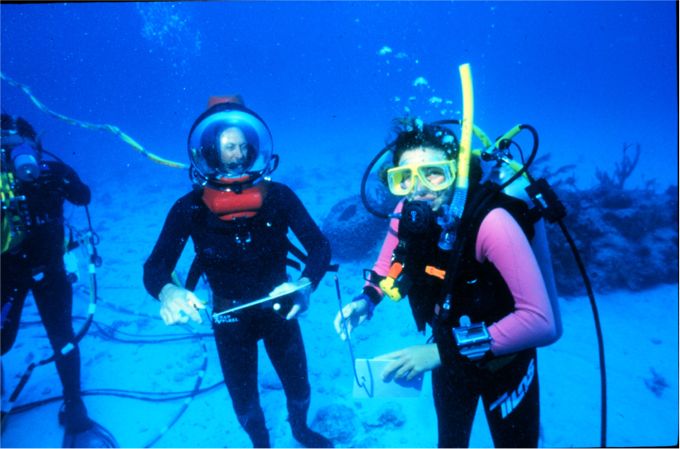
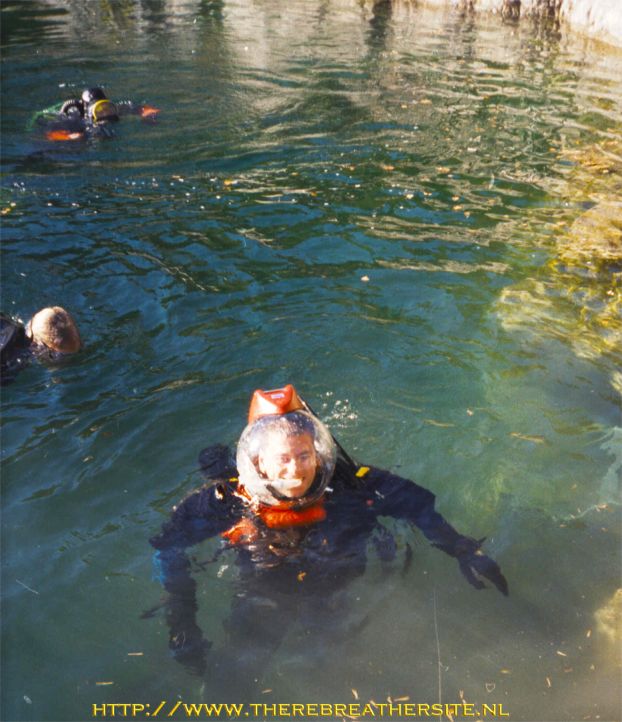
The next part of this page is about the LAMA LBS. I am very grateful to Mr. Yves Le Masson for making this important history of closed breathing system diving available so that this information will not be lost in the future.
The Lama series helmets and rebreathers were made by a French company called LAMA (Laboratoire de Mecanique Applique). The director of this company was Yves le Masson. They developed the “Bubble Helmet” used in the 80’s BBC series “Sea Trek”. Before this period the Lama company developed several rebreathers. In article article you could find more information.
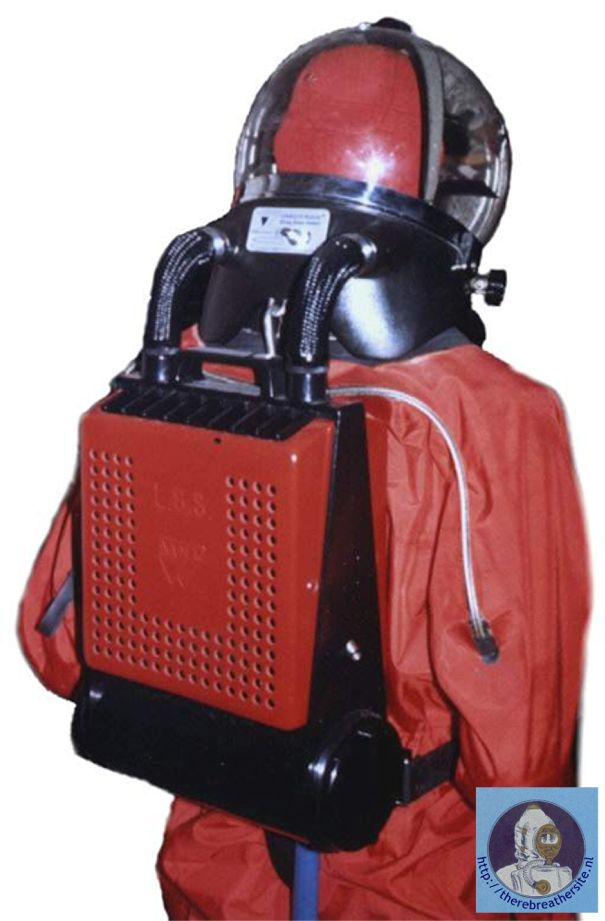
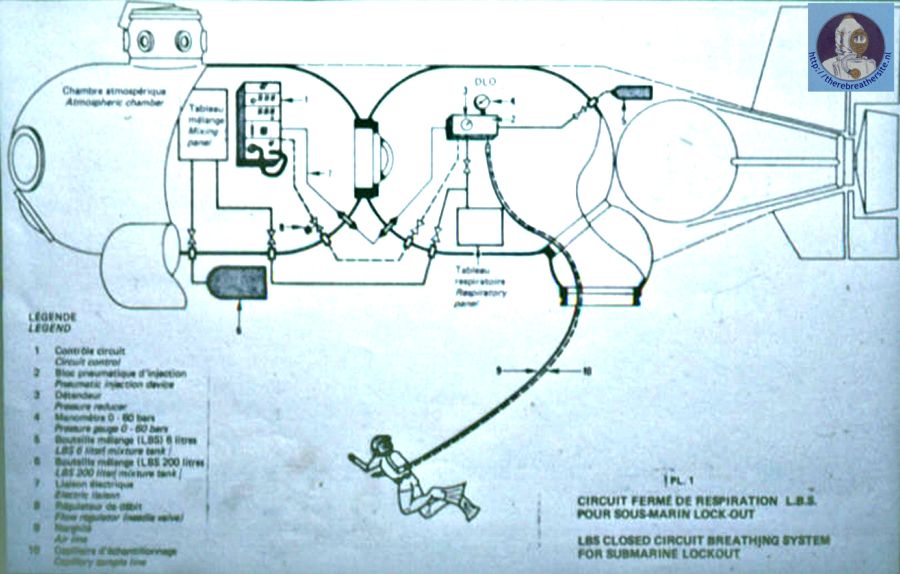
The L.B.S wa equipped with communication between diver and attendant. Also there was a double gas supply system. Gas was added by means of a solenoid and injections where dependant to the divers breathing frequency.
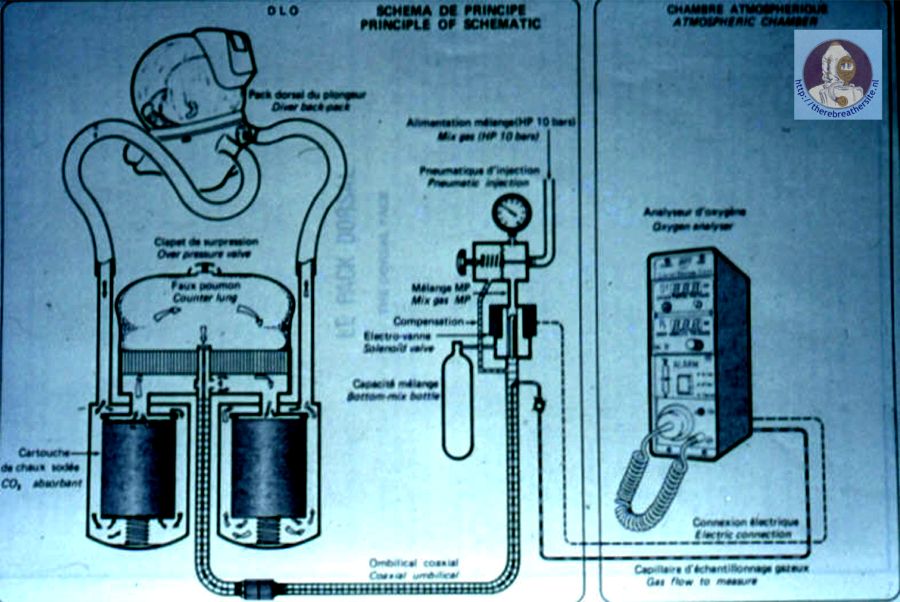
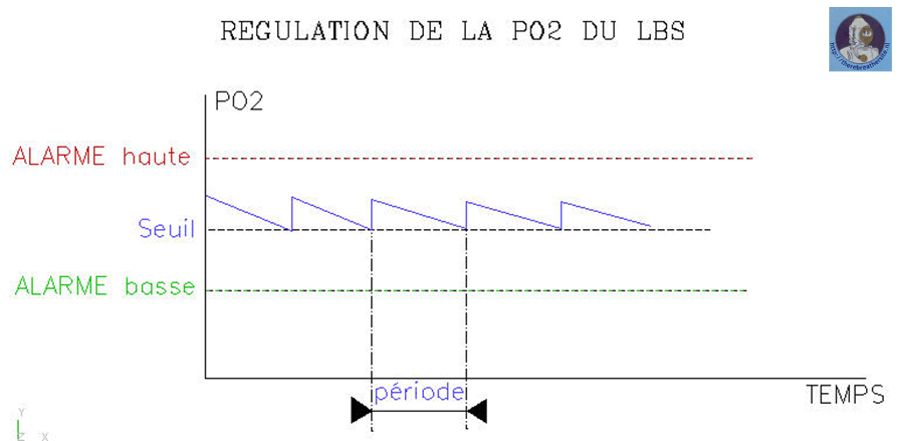
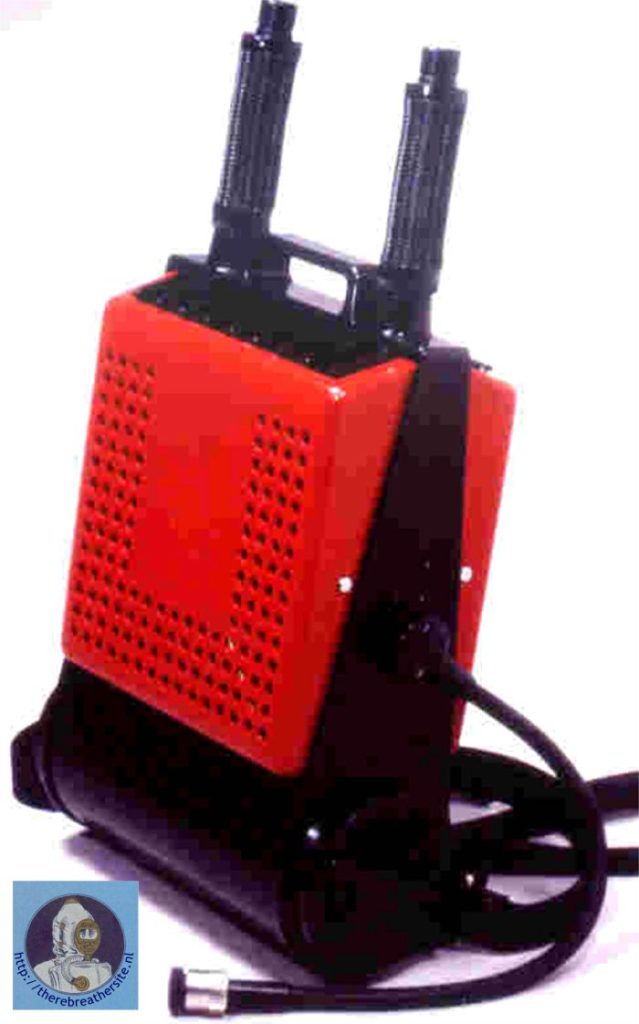
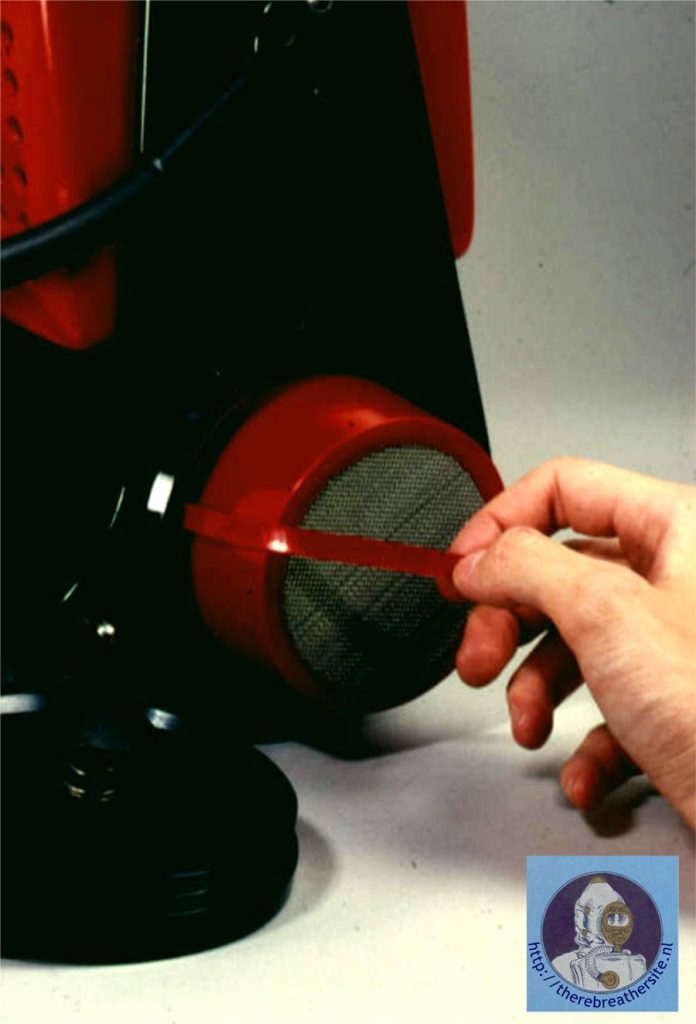
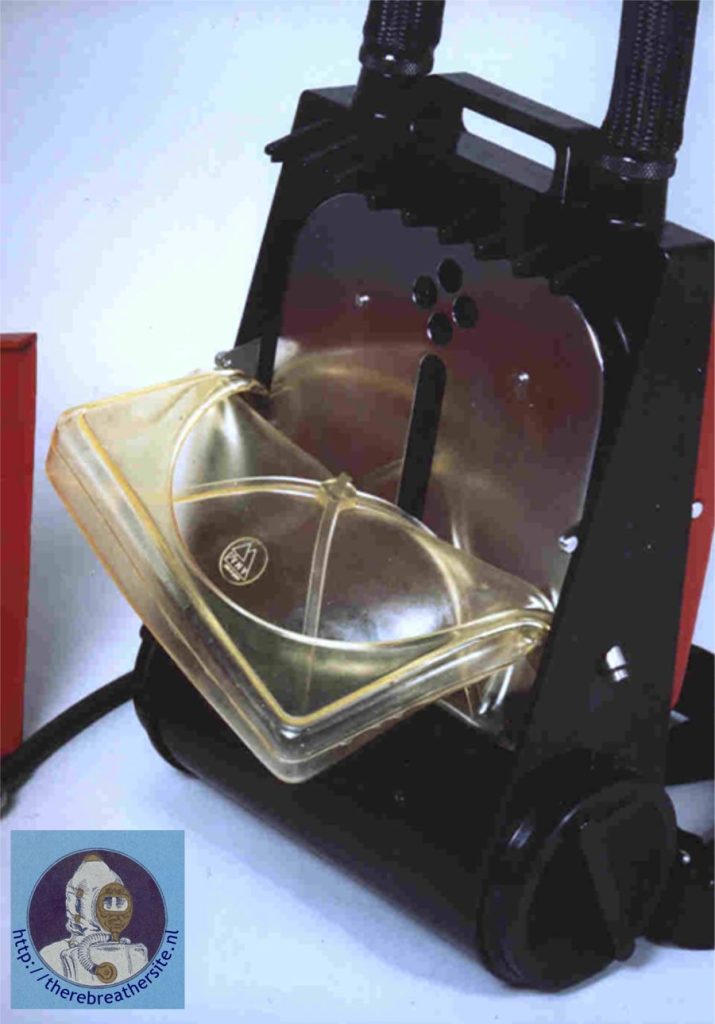
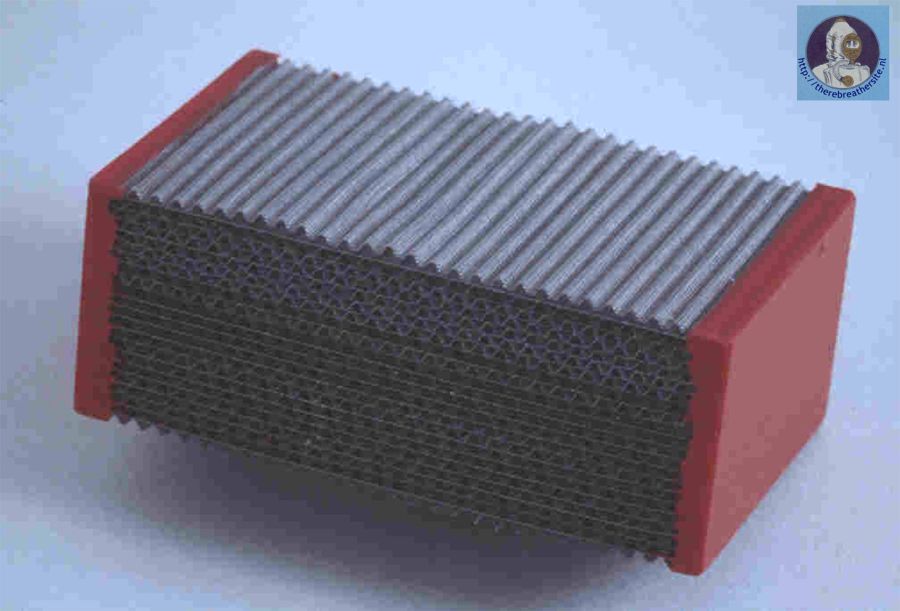
Het volgende en laatste deel van deze pagina toont de SCANUBA
Here you find information about another very special unit called LAMA “SCANUBA”
SCANUBA means:
Semi Closed Automatic Nitrox Underwater Breathing Apparatus
The LAMA Scanuba unit is a surface supplied semi closed nitrox rebreather. The mix is made on the surface and uses the depth the diver has descended to, to calculate the optimal nitrox mix. The mix is made from pure oxygen and air according the following diagram:
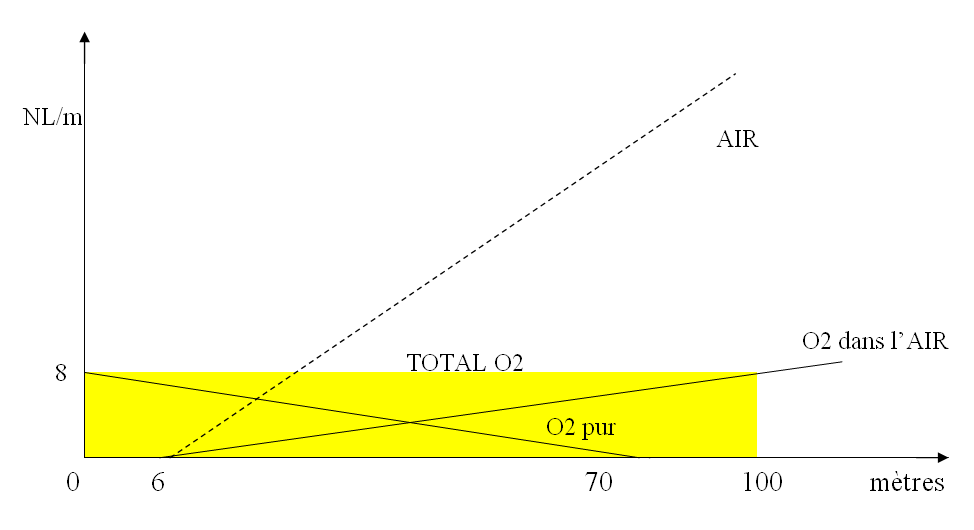
Here you see that pure oxygen is used up to a depth of 6 meters. Then the air injection starts. Since the air contains oxygen too the supply of pure oxygen is decreased until a depth of approx. 80 meters. When diving even deeper only air is injected and extreme pO2’s could cause problems. The unit is designed to have a almost constant pO2 in the range 6 – 80 meters.
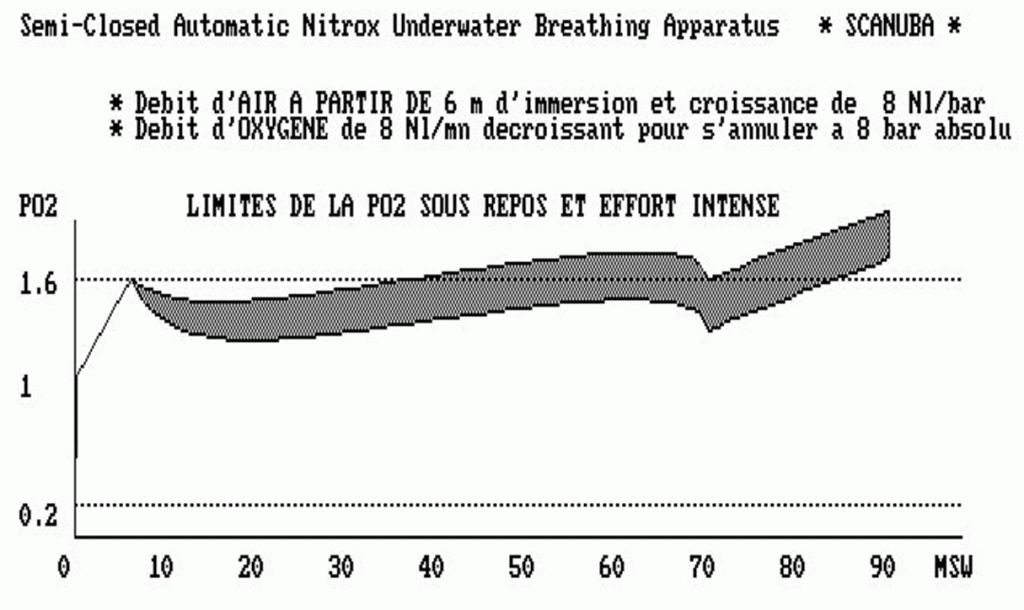
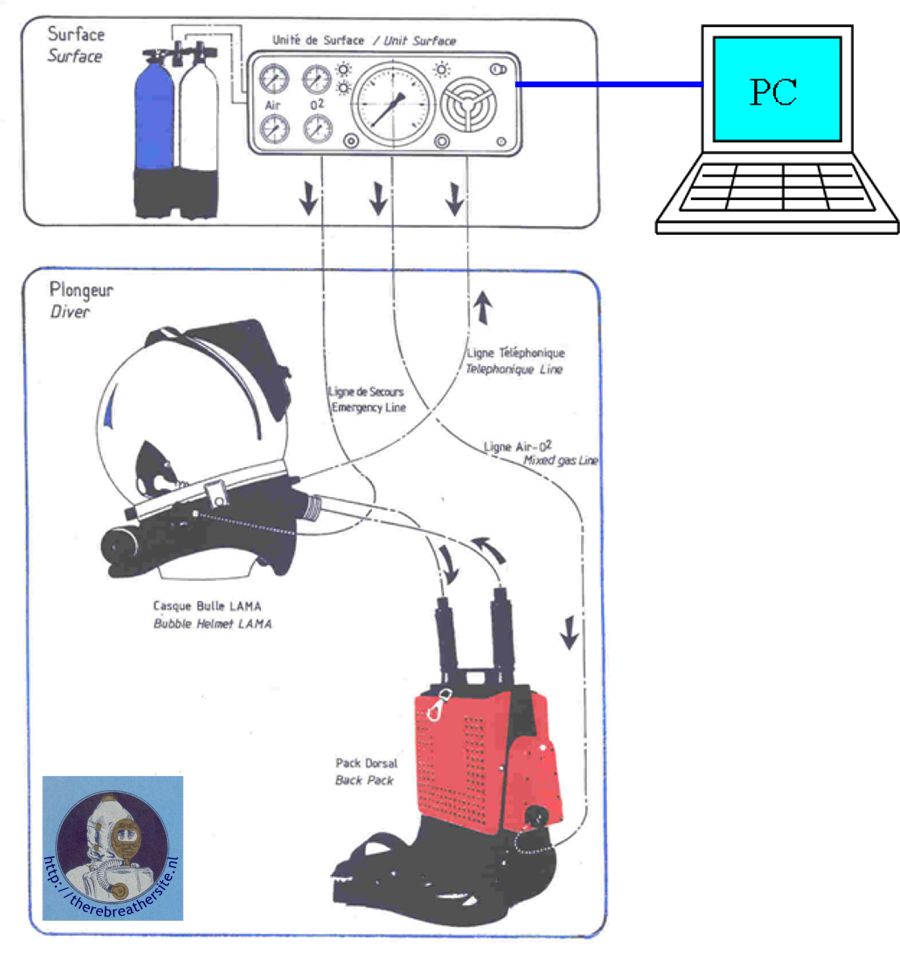
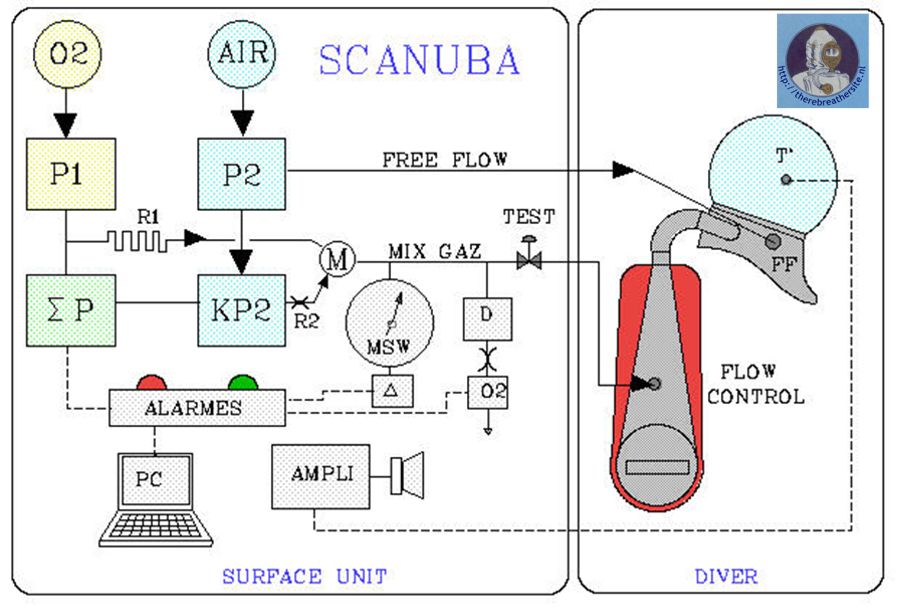
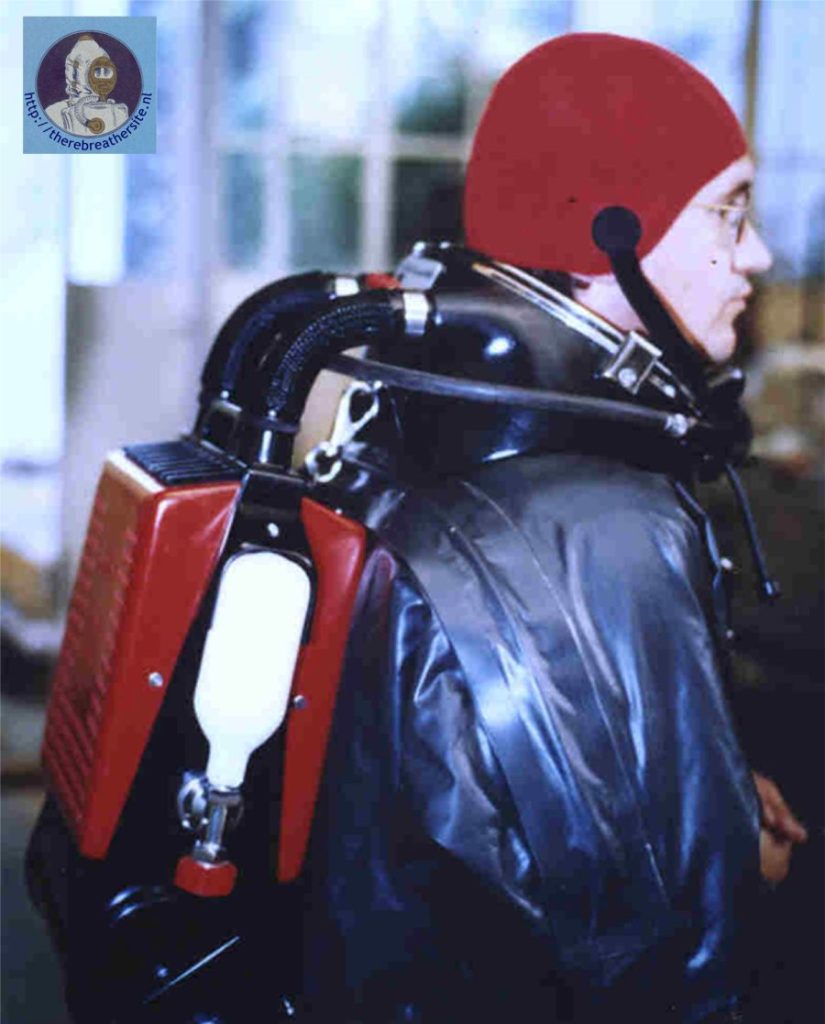
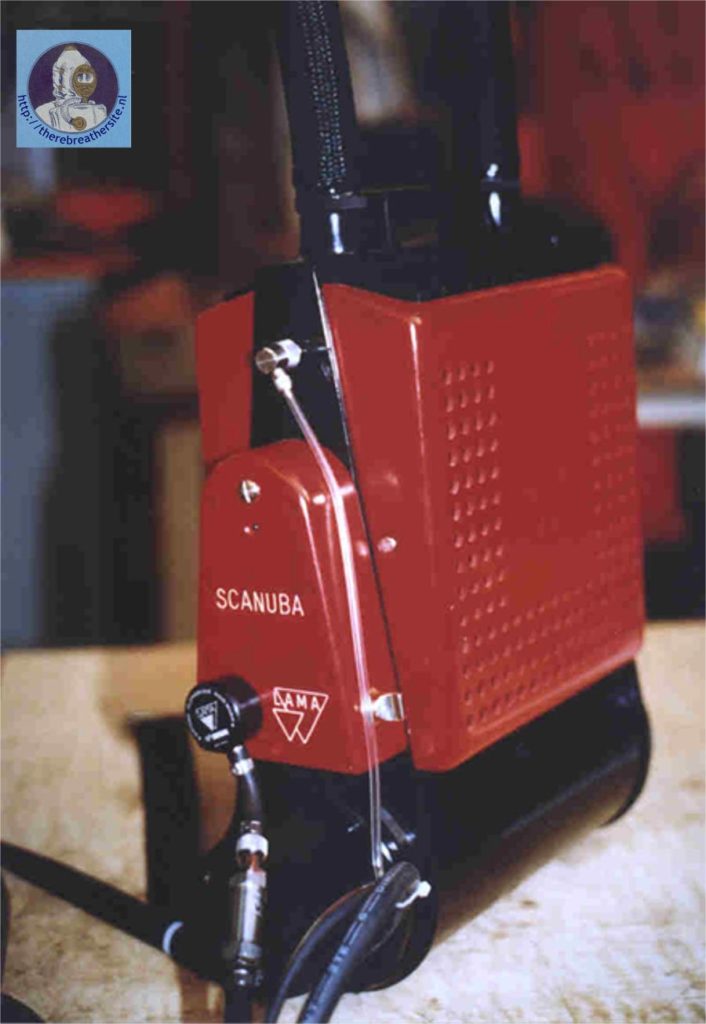
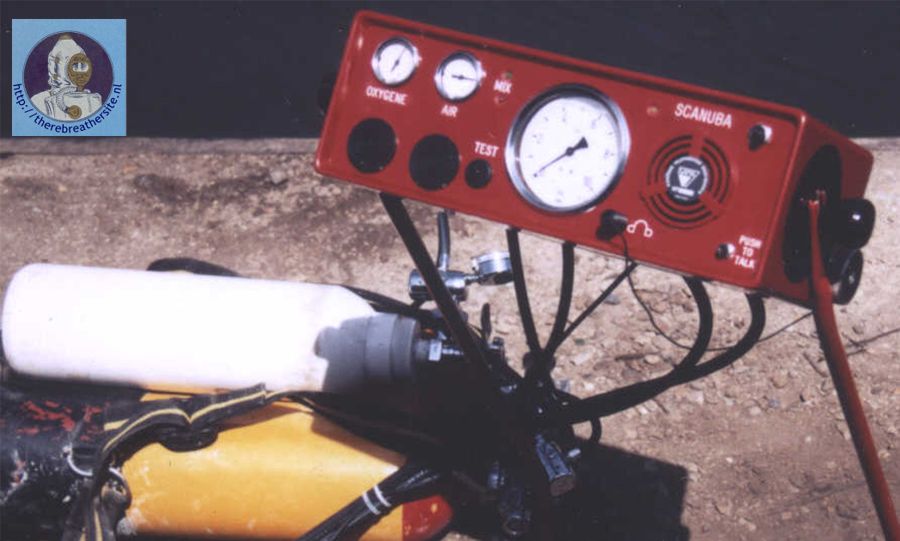
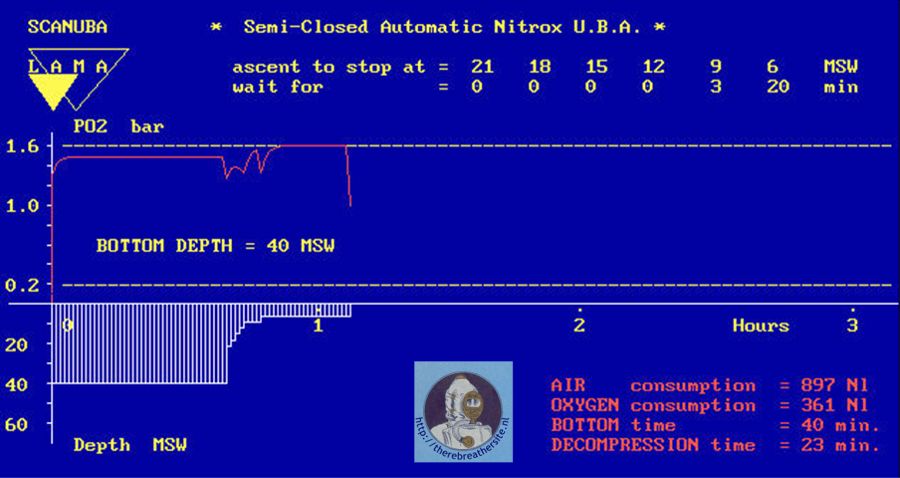
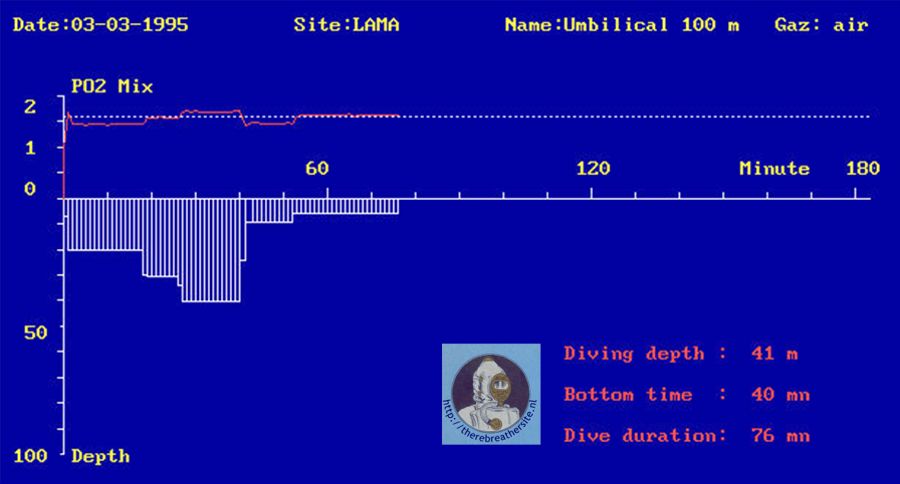
I would like to thank Yves le Masson for sending me this information!

Therebreathersite was founded by Jan Willem Bech in 1999. After a diving career of many years, he decided to start technical diving in 1999. He immediately noticed that at that time there was almost no website that contained the history of closed breathing systems. The start for the website led to a huge collection that offered about 1,300 pages of information until 2019. In 2019, a fresh start was made with the website now freely available online for everyone. Therebreathersite is a source of information for divers, researchers, technicians and students. I hope you enjoy browsing the content!


